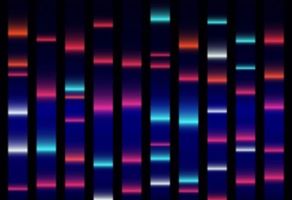Major Problems Caused by the Use of Uncharacterized Cell Lines
Cell lines play a pivotal role in life science research, serving as invaluable tools for studying the intricate mechanisms of biological processes, developing novel therapeutics, and advancing medical knowledge. However, the use of uncharacterized cell lines poses significant challenges and pitfalls that can compromise research outcomes and hinder scientific progress.

Contamination Issues
One of the foremost concerns in cell line research is contamination. Uncharacterized cell lines are susceptible to various types of contamination, including cross-contamination with other cell lines, mycoplasma contamination, and microbial contamination. These contaminants not only jeopardize the integrity of experiments but also introduce confounding variables that can skew research results.
Contamination can lead to erroneous conclusions and misinterpretation of experimental data. For instance, cross-contamination between cell lines can cause misidentification of cell types, resulting in inaccurate characterization and misrepresentation of cellular behavior. Microbial contamination, such as bacterial or fungal infections, can alter the cellular response and compromise the reliability of experimental findings.
Misidentification of Cell Lines
Misidentification of cell lines represents a significant challenge in life science research. It occurs when cell lines are unintentionally mislabeled or fraudulently misidentified, leading to unreliable experimental outcomes and wasted resources. The consequences of working with misidentified cell lines are far-reaching, ranging from skewed research findings to compromised reproducibility of studies.
Misidentification can arise due to various factors, such as human error during cell line propagation, poor record-keeping, or insufficient authentication procedures. In some cases, misidentification may be deliberate, driven by the desire to publish positive results or secure research funding. Unfortunately, these practices undermine the credibility and trustworthiness of scientific research.
Genetic and Phenotypic Drift
Cell lines are not static entities but dynamic systems that can undergo genetic and phenotypic changes over time. Genetic and phenotypic drift refers to the gradual accumulation of alterations in the genomic and phenotypic characteristics of cell lines during long-term propagation. These changes can significantly impact experimental outcomes, data interpretation, and the reproducibility of studies.
Genetic drift can lead to the emergence of subpopulations within a cell line, resulting in heterogeneity and confounding experimental results. Phenotypic changes, such as altered growth rates, morphological variations, or modified signaling pathways, can affect cellular behavior and compromise the validity of research findings.
Ethical Considerations
Ethical concerns surround the use of uncharacterized cell lines, especially when their origin is questionable or derived from unethical sources. Respecting donor rights, ensuring informed consent, and maintaining transparency in cell line sourcing are crucial ethical considerations that researchers must uphold.
Importance of Cell Line Authentication
Given the significant problems associated with uncharacterized cell lines, the importance of robust cell-line authentication cannot be overstated. Cell-line authentication provides a solid foundation for reliable and reproducible research outcomes. It ensures that the cell lines used in experiments accurately represent the intended cell type, minimizing uncertainties and confounding variables.
Authentication techniques such as DNA profiling, karyotyping, short tandem repeat (STR) analysis, and single-nucleotide polymorphism (SNP) analysis offer powerful tools to verify the identity, purity, and stability of cell lines. By employing these techniques, researchers can have confidence in the reproducibility of their experiments and the validity of their research findings.
- DNA profiling. DNA profiling, also known as DNA fingerprinting, is a powerful technique used to compare the genetic profiles of cell lines. It involves analyzing specific regions of the genome that display variability between individuals. By comparing the DNA profiles of a cell line with a reference database, researchers can determine the uniqueness and identity of the cells. DNA profiling relies on methods such as polymerase chain reaction (PCR) and capillary electrophoresis to amplify and analyze DNA fragments.
- Karyotyping. Karyotyping is a technique used to examine the number, size, and structure of chromosomes within a cell. It involves staining the chromosomes and visualizing them under a microscope. Karyotyping can identify chromosomal abnormalities, such as aneuploidy (abnormal chromosome number) or structural rearrangements. By comparing the karyotypes of a cell line with established standards or reference databases, researchers can assess the stability and consistency of the chromosomes within the cells. Karyotyping is particularly useful for detecting genetic abnormalities or changes that may occur during long-term cell line propagation.
- STR analysis. It is a widely used technique in cell-line authentication. It examines specific regions of the genome that contain repeated DNA sequences of two to six nucleotides. The number of repeats at each STR locus varies between individuals, making it a valuable tool for distinguishing between different cell lines. The STR analysis involves amplifying the targeted STR regions using PCR and then analyzing the amplified fragments using capillary electrophoresis.
- SNP analysis. It focuses on identifying single-base genetic variations within the genome. SNPs are the most common type of genetic variation and can occur at specific positions in the DNA sequence. SNP analysis involves genotyping specific SNPs to determine the genetic makeup of a cell line. SNP analysis techniques, such as DNA microarrays or next-generation sequencing (NGS), are used to interrogate thousands to millions of SNPs simultaneously.
Creative Bioarray Relevant Recommendations
| Product/Service Types | Description |
| Cell Line Authentication | Creative Bioarray provides a convenient STR-based method for cell line identity confirmation and for the detection of intra-species contamination in cultured cell lines. |
| Clonality Analysis Service (FISH) | Creative Bioarray provides the genetic characterization of producer cell lines by FISH, which offers information on transgene integrity and integration sites. |
| Animal Chromosome Analysis (G-banded) Service | Creative Bioarray provides karyotyping and chromosome analysis for animals, gametes, embryos, and stem cells. |